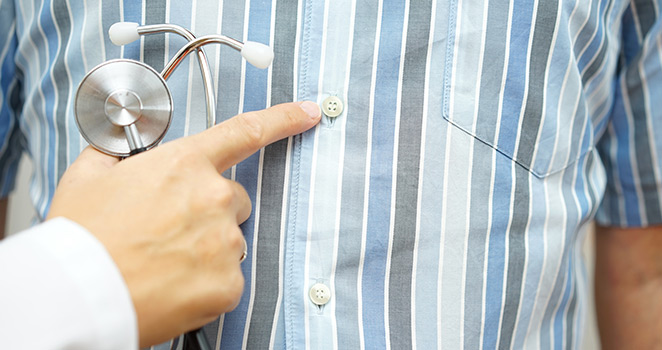Atrium Health Navicent Gastroenterology
Bile duct and Pancreas disorders

Common Bile Duct and Pancreas Disorders: Symptoms, Diagnosis, Prevention and Treatments
The pancreas and the bile duct are important components of the human body. The two organs play an important role in ensuring that the digestion system is seamless. The function of the pancreas is basically to produce pancreatic juices in collaboration with the liver. These secretions help in the digestion process. The role of the bile duct is to convey bile juice from the human liver and gallbladder into the duodenum.
Just as it is the case with other body organs, the human pancreas and bile duct are susceptible to a number of dysfunctions and disorders. It is, however, unfortunate that many individuals suffer from the disorders unknowingly. Regular checkups are of great significance since the disorders can be detected early and controlled accordingly. Gallstones, cholecystitis, and pancreatic cancer rank among the commonest disorders that affect the bile duct and the pancreas.
Pancreatic Cancer
This disorder is often caused by the uncontrolled growth of malignant cells and tumors on the exocrine part of the pancreas. In most cases, the cells grow on ducts that run throughout the pancreas. More than 75 percent of new cases arise on the pancreas's head or neck. Pancreatic cancer is often caused by smoking. Up to ten percent of new infections arise from gene mutation and hereditary factors. Pancreatic cancer continues to be an issue of great concern in the field of medicine. Nearly 40,000 new cases are reported every year, which is a cause of concern.
Signs and Symptoms of Pancreatic Cancer
The diagnosis of pancreatic cancer is quite difficult because the signs are not as prevalent as it is the case with other forms of cancer. More often than less, loss of appetite, abdominal discomfort, nausea and weight loss are the commonest but non-specific symptoms of early pancreatic cancer. In advanced cases, jaundice is the most prevalent symptom. It may, however, come with or without itching. An in-depth medical evaluation can help determine the extent of infection.
Treatment and Prevention
Many interventions have been advanced in a bid to treat pancreatic cancer. Chemotherapy is, however, the most utilized treatment procedure. Radiations released by the chemotherapy machines kills the cancerous cells, thus inhibiting their growth. This is mostly done during the early stages. In the event that the cancerous cells are localized, surgical treatment is often offered to patients to rid the pancreas of the malignant cells. Surgical resection is quite popular and effective. Pancreatic cancer can be prevented by avoiding predisposing habits such as cigarette smoking. Regular screening is also advisable.
Gallstones
Gallstones are caused by the accumulation of solid material in the gallbladder. These materials are often cholesterol crystals. At times, the human liver may secrete excess amounts of cholesterol, which is usually transported together with bile juice to the gallbladder. Eventually, the cholesterol may accumulate and form solid particles, which block the gallbladder.
A common symptom of gallstones is a sharp pain in the upper abdomen, which lasts for hours. Ultrasonography has been proven to be quite effective as far as the detection of gallstones is concerned. Failure to detect the condition early is quite hazardous. Generally, the gallbladder may be removed, more so if the abdominal pains are recurrent or last for days. The risk factors for this disorder include gender, age, body weight, and family lineage.
Females stand a higher risk of being affected by gallstones than men. Those who are old are also at a higher risk because gallstones accumulate in the gallbladder in the course of one's life. Those who suffer from obesity are similarly highly likely to be affected by gallstones. This is because their livers secrete more cholesterol, thus putting them at risk. The condition is also hereditary. In this regard, individuals who have family members suffering from the condition should closely monitor their biliary system. Gallstones can be prevented by staying fit and eating low-cholesterol foods.
Cholecystitis
This condition often results from the inflammation of the human gallbladder. In most cases, the inflammation results from blockage of the cystic duct by gallstones.Even though cholecystitis is widely considered an advanced form of gallstones, the two conditions vary. The difference arises from the fact that gallstones result from excess cholesterol production and accumulation while cholecystitis is a result of blockages in the cystic duct.
Individuals suffering from cholecystitis often complain of abdominal pain, which may last up to six hours or more. In rare cases, sufferers experience nausea and fever. Just as it is the case with gallstones, ultrasonography can effectively be used to detect cholecystitis. If the condition is found to be at an advanced stage, laparoscopy is often conducted on patients to remove the gallbladder.
Acute Cholecystitis
This condition occurs rapidly and affects a majority of individuals who suffer from gallstones. The inflammation associated with acute cholecystitis often begins without an infection. Normally, the infection comes once the condition reaches an advanced stage. Those who suffer from acute cholecystitis often experience sharp pains, which are brought about by the accumulation of fluid in the gallbladder. The condition is caused by elongated fasting periods, illnesses and major injuries, surgery and immunity deficiencies.
Chronic Cholecystitis
This condition results from ignoring acute cholecystitis. It is characterized by severe inflammation of the gallbladder. Patients with chronic cholecystitis often report incessant pain in the lower and upper abdomen. At this stage, the gallbladder often has undergone complete and irreparable damage due to the severe inflammation. The gallbladder often develops thick walls, which limit its functionality and effectiveness. In some cases, there might be deposition of calcium on the gallbladder's walls. This often causes the walls to harden. In the medical domain, the condition is referred to as porcelain gallbladder.